The Confessions of a Caricaturist, Vol. 1, Harry Furniss [digital book reader txt] 📗
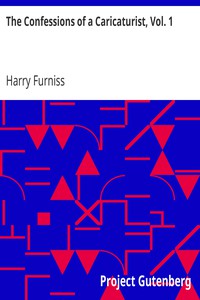
- Author: Harry Furniss
Book online «The Confessions of a Caricaturist, Vol. 1, Harry Furniss [digital book reader txt] 📗». Author Harry Furniss
[Pg 116]
[Pg 117]
At the last moment, in order to complete one of the pictures, a portly Dutchman was required, and a telegram was despatched to me to enquire whether I would represent the character. A dress, which was not a very good fit, was provided for me by the costumier of the show, and with the  PORTION OF A LETTER FROM GEORGE DU MAURIER. aid of a little padding, a good deal of rouge, a long clay pipe, and a bottle of schnapps, I managed to look something like the inflated Hollander I was representing, in the centre of the group, where I was supposed to be looking on at a game of bowls. Caldecott, who was placed at a window, flirting with the maids of the Queen, was attired in a graceful costume of the most faultless description, surmounted by a magnificent hat with a sweeping brim and splendid feathers, upon which he had expended no little pains and money. My head-gear consisted of a very insignificant stage property hat, but as I was not intended to contribute an element of beauty to the picture, that didn't matter. The tableau was arranged by [Pg 118] Mr. E. A. Abbey, and when taking his last look round before the curtain was raised, his artistic eye detected that more black was required in the centre. While we were thus in our allotted positions, and straining every nerve to remain perfectly rigid—an ordeal which, by the way, I never wish to go through again, as I had hard work to restrain myself from breaking out into a Highland fling or an Irish jig, or calling out "Boo!" to the audience to relieve my pent-up feelings—Mr. Abbey suddenly seized the superb hat on Caldecott's head, which the latter had had specially made, and in which he really fancied himself, handed it to me, and to Caldecott's horror, and almost before he was conscious that he had been made ridiculous by the wretched remnant which had been sent from Bow Street for me, the curtain was rung up.
PORTION OF A LETTER FROM GEORGE DU MAURIER. aid of a little padding, a good deal of rouge, a long clay pipe, and a bottle of schnapps, I managed to look something like the inflated Hollander I was representing, in the centre of the group, where I was supposed to be looking on at a game of bowls. Caldecott, who was placed at a window, flirting with the maids of the Queen, was attired in a graceful costume of the most faultless description, surmounted by a magnificent hat with a sweeping brim and splendid feathers, upon which he had expended no little pains and money. My head-gear consisted of a very insignificant stage property hat, but as I was not intended to contribute an element of beauty to the picture, that didn't matter. The tableau was arranged by [Pg 118] Mr. E. A. Abbey, and when taking his last look round before the curtain was raised, his artistic eye detected that more black was required in the centre. While we were thus in our allotted positions, and straining every nerve to remain perfectly rigid—an ordeal which, by the way, I never wish to go through again, as I had hard work to restrain myself from breaking out into a Highland fling or an Irish jig, or calling out "Boo!" to the audience to relieve my pent-up feelings—Mr. Abbey suddenly seized the superb hat on Caldecott's head, which the latter had had specially made, and in which he really fancied himself, handed it to me, and to Caldecott's horror, and almost before he was conscious that he had been made ridiculous by the wretched remnant which had been sent from Bow Street for me, the curtain was rung up.
I confess I have a certain amount of pity, closely akin to contempt, for the artist who must have the actual character he wants to paint, who cannot use a model merely for reference, but paints in everything like a photograph. Some artists call such feebleness conscientiousness, but to me it seems mere weakness. Must an author paint each character in his book, or an actor take his every impersonation on the stage, minutely from some living model? Surely observation and natural originality is more than the photographic copying of your "conscientious" artist! Worse feebleness still it is when an artist has to paint a well-known character, say King Lear or Mary Queen of Scots, and goes about hunting for a living person as near as possible in appearance to the original, and then costumes and slavishly reproduces him or her, without any show of judgment or insight after the model is once selected. And this lack of insight into character seems deplorably prevalent among our figure painters, for how often we see in the exhibitions the model with a "good head" tamely reproduced over and over again—here as a monk, there as a Polonius, Thomas � Becket, a "blind beggar," "His Excellency," a pensioner, or painted by some artist who wants to make a bid for portraiture as "A portrait of a gentleman"!
[Pg 119]
 A TRANSFORMATION.
A TRANSFORMATION.
Black and white men have to introduce so many characters into their work, they are obliged to invent them; but it is a curious fact that this facility disappears at times. The late Mr. Fred Barnard, clever as he was at inventing character for his black and white work, found, when  he was painting in oil, that confidence had left him, and he spent several days wandering about London to find real characters for a picture he was painting representing the jury in "Pilgrim's Progress." One day in Oxford Street he saw a hansom-cab driver with a face besotted with drink and "ripe" for production as a slave to Bacchus. Barnard hailed the hansom, jumped in, and directed the jehu to drive him to his studio on Haverstock Hill. In going up the Hampstead Road a tram-car ran over a child. Barnard was terribly upset by the touching sight, and told the driver to pull up at the nearest tavern. Getting out, he looked at his "subject," intending to invite him to refreshment before taking him on to his studio, where he intended to paint him. To his horror the face of the bibulous cabman had lost all its "colour," and was of a pale greenish hue.
he was painting in oil, that confidence had left him, and he spent several days wandering about London to find real characters for a picture he was painting representing the jury in "Pilgrim's Progress." One day in Oxford Street he saw a hansom-cab driver with a face besotted with drink and "ripe" for production as a slave to Bacchus. Barnard hailed the hansom, jumped in, and directed the jehu to drive him to his studio on Haverstock Hill. In going up the Hampstead Road a tram-car ran over a child. Barnard was terribly upset by the touching sight, and told the driver to pull up at the nearest tavern. Getting out, he looked at his "subject," intending to invite him to refreshment before taking him on to his studio, where he intended to paint him. To his horror the face of the bibulous cabman had lost all its "colour," and was of a pale greenish hue.
"That was horful, sir, warn't it? It'll upset me for a week."
The disappointed artist dismissed his "subject."
Much could be written of this genuine humourist. His buoyant fun was irrepressible; indoors and out of doors he entertained himself—and sometimes his friends—with his jokes. In his studio he kept as pets some little tortoises. They were allowed to crawl about as they liked, but he had painted on their backs caricatures—a laughing face, a sour-green face, one with a look of horror, another of mischief. A visitor seated unaware [Pg 120] of these would suddenly spring off the sofa as the walking mask slowly appeared from underneath it! Barnard's power of mimicry was great, and his jokes were as excellent as his drawings. Even when sitting before the camera for his photograph, he had his little joke.
 BARNARD AND THE MODELS.
BARNARD AND THE MODELS.
There are a number of girls who go the round of the studios, but have no right whatever to do so. They generally hunt in pairs, and this habit surely distinguishes them from the real model. They are more easily drawn than described. Two of this class once called on Barnard.
"What do you sit for?" he asked.
"Oh, anything, sir."
"Ah, I am a figure man, you are no use to me, but there is a friend of mine over there who is now painting a landscape—I think you might do very well for a haystack; and your friend might try studio No. 5 and sit for a thunder-cloud, the artist there is starting a stormy piece—oh, good morning." Tableau!
A wretched individual once called upon me and begged me to give him a sitting. I asked him to sit for what I was at work upon: this was a wicket-keeper in a cricket match bending over the wicket. I assured the man he need not apologise, as he had really turned up at an opportune moment; the drawing was "news," and it had to be finished that day. When I had shown my model the position and made him understand exactly what I wanted, I noticed to my surprise that he was trembling all over. I immediately asked him if he were cold.
 "I SIT FOR 'ANDS, SIR."
"I SIT FOR 'ANDS, SIR."
"No."
"Nervous?"
"No."
"Then why not keep still?"
[Pg 121]
"Well, that's just what I can't do, sir! I had to give up my occupation because, sir, I am hafflicted with the palsy, and when I bend I do tremble so. I only sit for 'ands, sir—for 'ands to portrait painters. I close 'em for a military gent—I open 'em for a bishop—but when the hartist is hin a 'urry I know as 'ow to 'ide one 'and in my pocket and the hother hunder a cocked 'at."
Hiding hands recalls to me a fact I may mention in justice to our modern English caricaturists. We never make capital out of our subjects' deformities. This I pointed out at a dinner in Birmingham a few years ago, at which I was the guest of the evening, and as I was addressing journalists I mention this fact in justice to myself and my brother caricaturists. As it happened, that afternoon I had heard Mr. Gladstone making his first speech in the opening of Parliament, 1886, after being returned in Opposition. Turning round to his young supporters, he used for the first time the now famous expression "an old Parliamentary hand," holding up at the same time a hand on which there were only three fingers. Now had I drawn that hand as it was, minus the first finger, showing the black patch? It would have been tempting on the part of a foreign caricaturist, because it had a curious application under the circumstances. (But it would be noticed that in my sketch in Punch the first finger, which really did not exist, is prominently shown.) This was the first time the fact was made public that Mr. Gladstone had not the first finger on the left hand; since then, however, all artists, humorous or serious, were careful to show Mr. Gladstone's left hand as pointed out by me.
Now I had noticed this for years in the House, and I hold as an argument that men are not observant the fact that Members who had sat in the House with Mr. Gladstone, on the same benches, for years, assured me that they had never noticed [Pg 122] his hand before I made this matter public. So that when I am told that I misrepresent portraits of prominent men I always point to this fact.
Mr. Gladstone was careful to hide the deformity in his photographs, but in his usual energetic manner in the House the black patch in place of the finger was on many occasions in no way concealed.
 A PUNCH ENGRAVING, DRAWN ON WOOD.
A PUNCH ENGRAVING, DRAWN ON WOOD.
These are plebeian models, but sometimes artists' friends recommend amateur models—a broken-down gentleman or some other poor relation—and when you are drawing social modern subjects, of course these are really of more use than the badly-dressed professional model.
On "Private View Day" at the Royal Academy a few years ago a knot of artists and their wives were in one of the rooms; it was late, and few of the visitors remained. The attention of the artists was attracted by a stately and beautiful being who entered and went round examining the pictures.
"How charming!" remarked one.
"Delightful!" replied another.
"Oh, if she would but sit to me!" prayed a third.
"Why not ask her?" asked the practical one. "If anyone can, you can; so remember that faint heart never won fair sitter!"
[Pg 123]
"Well, here goes!" whispered the cavalier, Mr. Val Prinsep, R.A., in the tone of one about to lead a forlorn hope, and he charged desperately across the gallery. He approached the fair stranger, and politely taking off his hat said diffidently:
"Madam, I am one of the Academy. Should you wish to know anything about the pictures I shall be glad——"
"Oh, thanks. I know a good deal about them."
"Indeed! Then you will understand how we artists are always on the look-out for beauty to paint—and—ah—hm—well, you see I—that is we" (pointing to the group) "were so struck with your presence that—ah—pardon my abruptness—we thought that if such a thing were possible you might condescend to allow one of us to make a study of your head—ah."
"Oh, with pleasure," said the fair visitor, taking from her hand-bag a neat little note-book, and opening it, she said:
"Well, I have only got Sundays and one Wednesday next month disengaged,—I have got sittings on every other day. Will this be of any use to you?"
She was a model!
The first house I occupied after I married faced one occupied by a well-known and worthy fiery-tempered man of letters, and it so happened that one evening my wife and I were dining at the house of another neighbour. We were gratified to learn that our celebrated vis-�-vis, hearing we had come to live in the same square, was anxious to make our acquaintance. On our return home that night we discovered the latch-key had been forgotten, and unfortunately our knocking and ringing failed to arouse the domestics. It was not long, however, before we awoke our neighbours, and a window of the house opposite was violently thrown open, and language all the stronger by being endowed with literary merit came from that man of letters, who in the dark was unable to see the particular neighbours offending him, and he referred to my wife and myself in a way that could not be passed over. A battle of
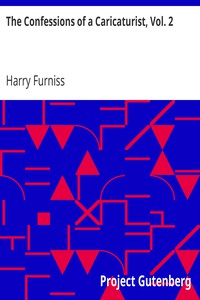

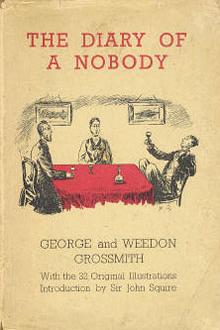
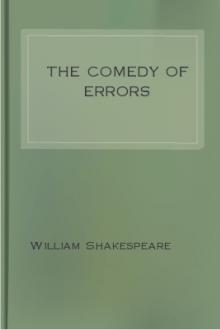
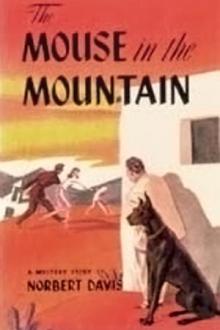
Comments (0)